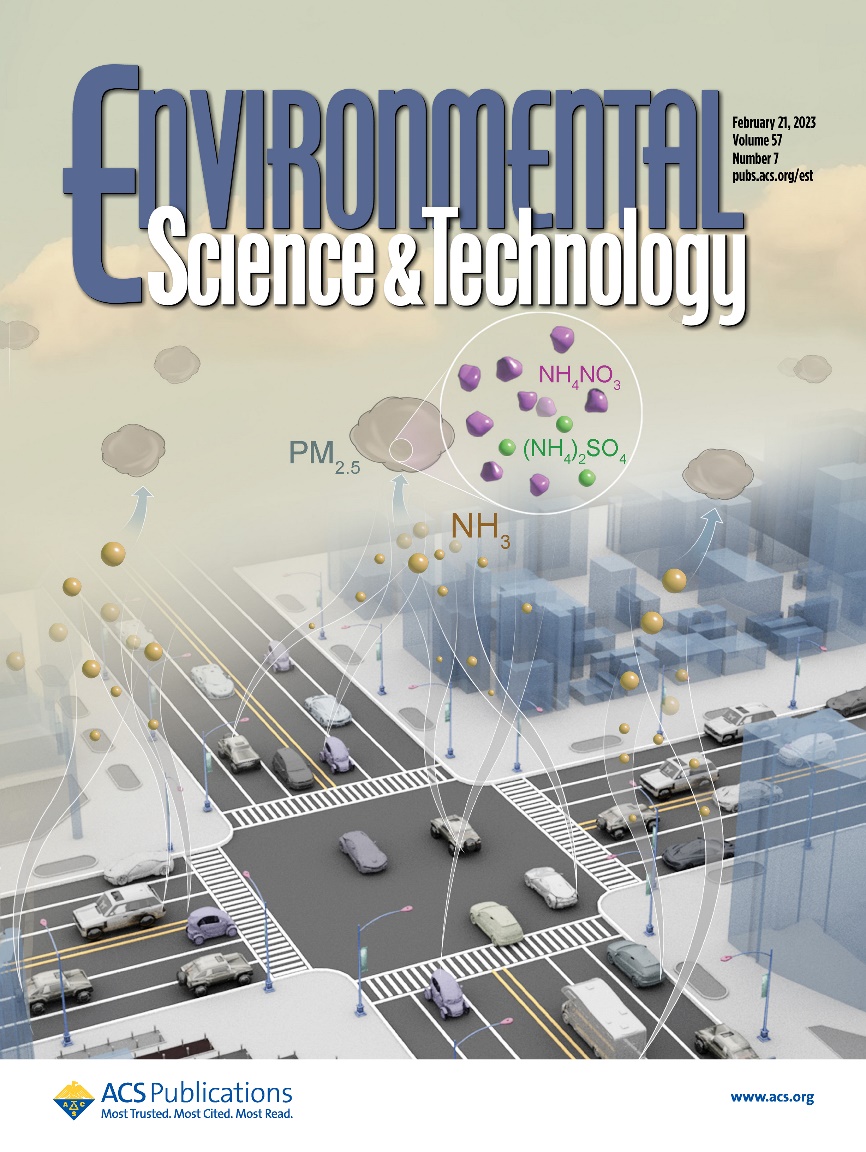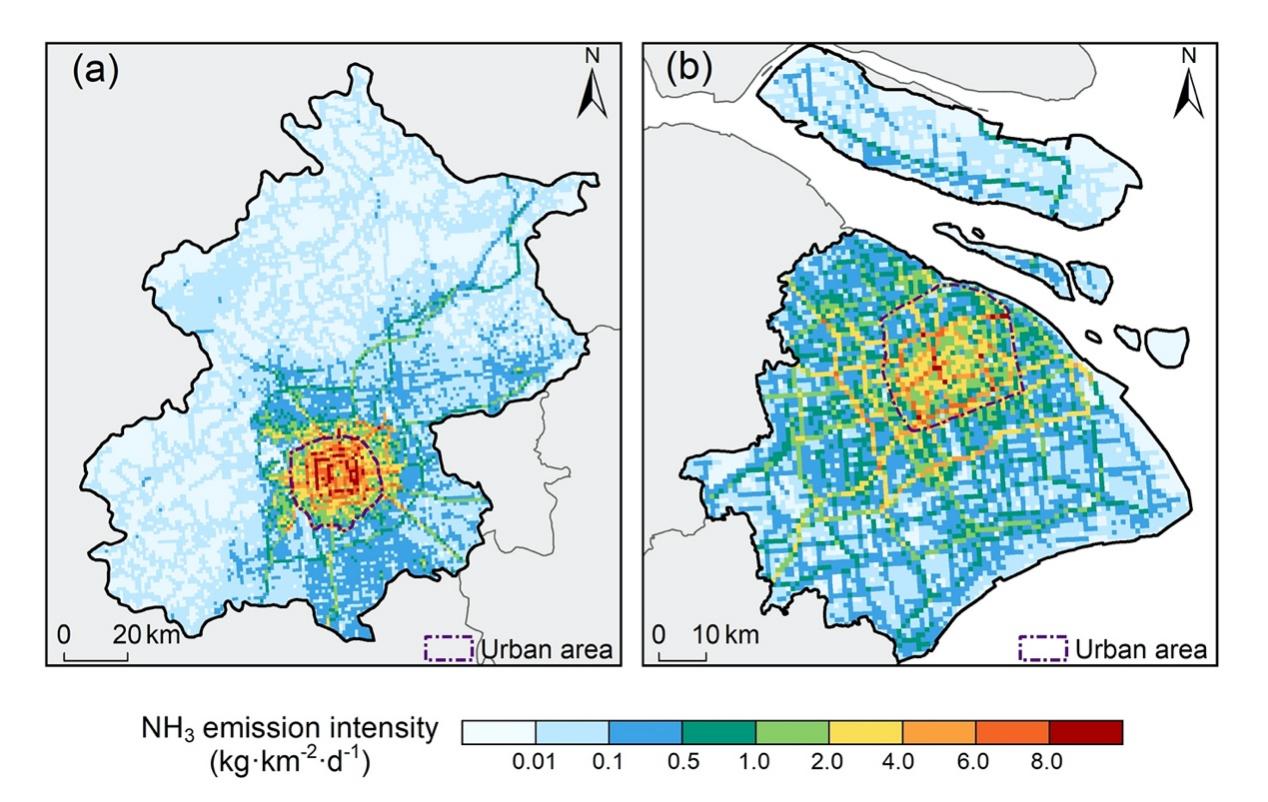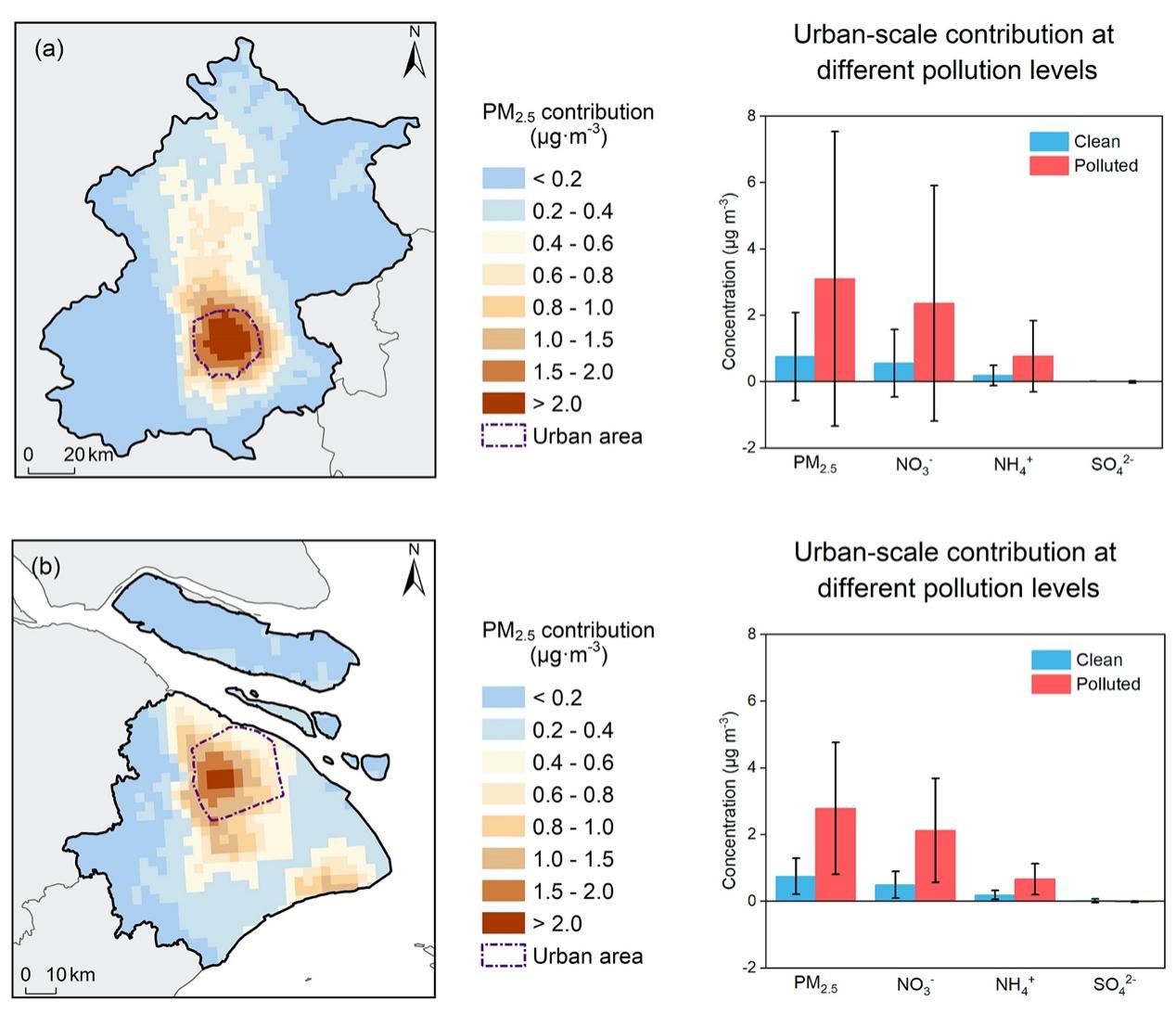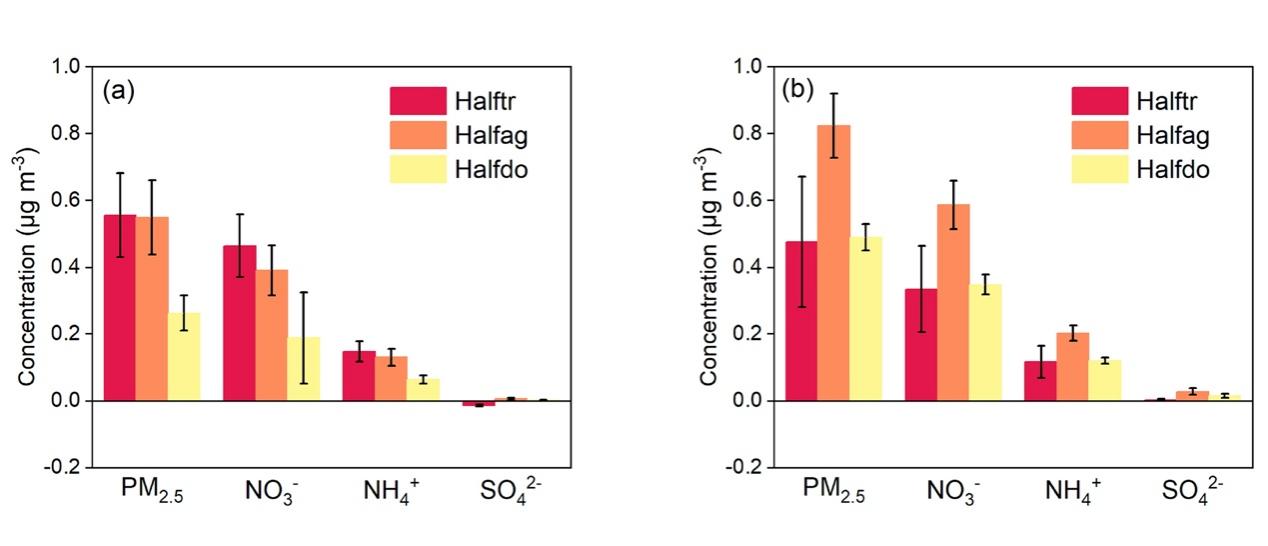School of Environment, Tsinghua University, Feb 22, 2023 (Correspondent Wang Yunjie) Recently, Associate Professor Zhang Shaojun’s research team from the School of Environment, Tsinghua University has made new progress in studying the contribution of vehicular ammonia emissions to PM2.5 pollution in China’s megacities. Focusing on Beijing and Shanghai, this study constructed high-resolution inventories of vehicular ammonia (NH3) emissions across the entire road network of the cities. By conducting chemical transport simulations, the team assessed the contribution of vehicular NH3 emissions to PM2.5 pollution and further demonstrated that abating vehicular NH3 emissions is a feasible and effective strategy against PM2.5 pollution. The research paper has been selected as the Supplementary Cover (see Figure 1) of Environmental Science & Technology.

Figure 1 Research paper selected as the Supplementary Cover for Environmental Science & Technology (ES&T)
NH3 is an alkaline gas that exhibits high sensitivity to the formation of secondary PM2.5. It is generally known that NH3 emissions are primarily from agricultural activities, but recent studies have revealed that combustion processes also contribute to urban NH3 emissions. The implementation and enforcement of vehicle emission standards have led to the extensive adoption of advanced tailpipe control technologies such as three-way catalytic converters (TWC) for gasoline vehicles and selective catalytic reduction (SCR) systems for diesel vehicles, which result in NH3 emissions as a byproduct. However, the characteristics of vehicular NH3 emissions and their contribution to PM2.5 concentrations has not been assessed comprehensively. Therefore, this study developed high-resolution vehicular NH3 emission inventories based on real-world traffic data for two megacities, Beijing and Shanghai, and systematically evaluated their characteristics in terms of fleets, seasons, and space. Additionally, by conducting WRF/CMAQ simulations, the study assessed the contribution of vehicular NH3 emissions to PM2.5 concentrations, with a specific focus on the heavy pollution periods. Moreover, the study also proved the critical role of vehicular NH3 emission reduction in controlling PM2.5 pollution.
The findings indicate that motor vehicles have emerged as a significant anthropogenic source of NH3 emissions in megacities of China. In 2017, motor vehicles emitted 2,074 and 1,514 tons of NH3 in Beijing and Shanghai, respectively, with gasoline vehicles accounting for 75% and 81% of the emissions. Vehicular NH3 emissions were highly concentrated in densely-populated and traffic-congested urban areas (e.g., within Beijing’s Fifth Ring Road), and the relative contribution to NH3 emissions in the urban areas of Beijing and Shanghai amounted to 86% and 45%, respectively (refer to Figure 2).

Figure 2 Spatial distribution of vehicular NH3 emission intensities in Beijing and Shanghai
Vehicular NH3 emissions significantly contribute to PM2.5 concentrations in urban areas, particularly during the winter season. The air quality simulation results demonstrate that vehicular NH3 emissions contributed 1.8 and 1.1 μg/m³ to wintertime PM2.5 concentration in urban areas of Beijing and Shanghai in 2017, respectively, accounting for approximately 3% of total PM2.5 concentrations (refer to Figure 3). The impact of vehicular NH3 emissions became more conspicuous on heavily-polluted days, with PM2.5 concentration contribution up to about 3 μg/m³. The PM2.5 contribution decreased in summer (0.6 and 0.5 μg/m³ in urban areas of Beijing and Shanghai) due to factors such as increasing agricultural activities and high volatility of ammonium nitrate.

Figure 3 Contribution of vehicular NH3 emissions to wintertime PM2.5 concentrations in Beijing and Shanghai
The study conducted a comparative analysis of the effect of controlling NH3 emissions from various sources on urban PM2.5 concentration reduction. If NH3 emissions from motor vehicles, agriculture, and residential sources are reduced by 50%, respectively, the wintertime PM2.5 concentration in the urban area of Beijing would decrease by 0.6 μg/m³ under the scenario of reducing motor vehicle emissions, which is equivalent to the scenario of agricultural emission reduction. Similarly, a reduction of 0.5 μg/m³ in wintertime PM2.5 concentration could be achieved in the urban area of Shanghai (Figure 4). These results indicate that although NH3 emissions from motor vehicles are significantly lower than those from the agricultural sector across the city, the high chemical reactivity of NH3 makes the reduction of vehicular emissions a more direct and effective approach to mitigating urban PM2.5 pollution. Therefore, strengthening the control of vehicular NH3 emissions is an efficient and feasible strategy for PM2.5 pollution control in the future.

Figure 4 Effects of a 50% reduction in NH3 emissions from motor vehicles, agriculture, and residential sources on winter PM2.5 concentrations in urban areas of Beijing and Shanghai
The paper titled “Vehicular Ammonia Emissions Significantly Contribute to Urban PM2.5 Pollution in Two Chinese Megacities” were published online in Environmental Science & Technology.
The paper’s co-first authors are Wang Yunjie, a doctoral student from the School of Environment, Class of 2018, and Wen Yifan, a postdoctoral fellow from the Tsinghua “Shuimu Scholars” Program. The corresponding author is Associate Professor Zhang Shaojun from the School of Environment. Dr. Zheng Guangjie from the Max Planck Institute for Chemistry, Director Huang Cheng from the Shanghai Academy of Environmental Sciences, and Professors Wang Shuxiao, Wu Ye, and Academician Hao Jiming from the School of Environment provided assistance in data collection, result discussion, and policy analysis. The research was supported by the National Key R&D Program, the National Natural Science Foundation of China, the Postdoctoral Innovative Talents Support Program, and the Tsinghua “Shuimu Scholars” Program.
Link to the paper:https://pubs.acs.org/doi/10.1021/acs.est.2c06198





